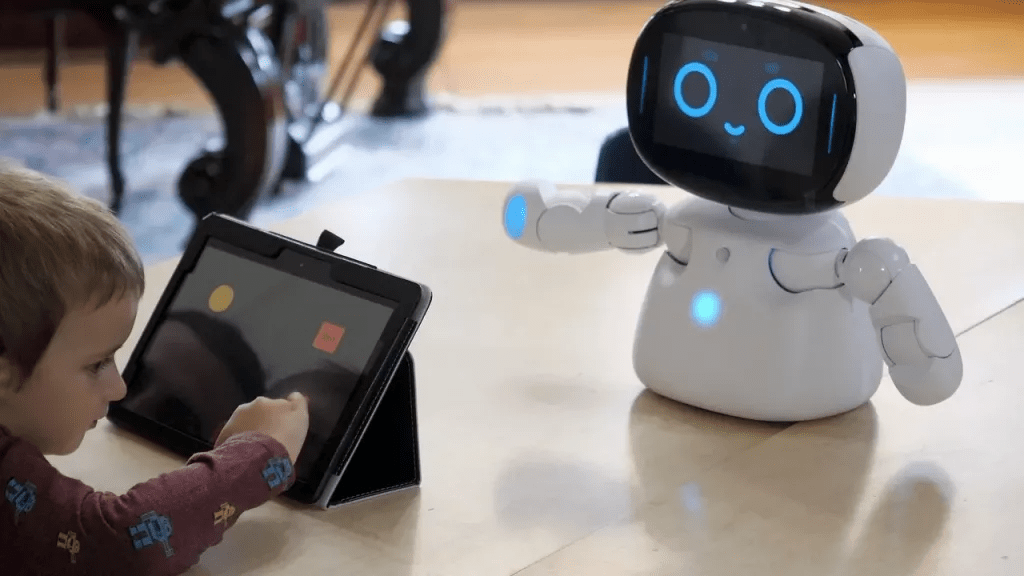The Digital Age has certainly paved the way for incredible advancements in many industries, including education. Today’s high-tech world allows educators to maximize learning experiences for their students through technology integration. Teaching children with autism and other needs through assistive technology has never been more accessible than it is today! Special education teachers are well-trained and often receive the latest professional development and resources to provide effective intervention for children with autism. However, high expectations make it difficult for teachers to provide the enrichment and support that many children with special needs require. Antiquated equipment may compromise the goal of special education programs. Robotic technologies, however, allow educators to use the latest technological breakthroughs, helping students learn while also engaging them in exciting activities and social experiences that enrich their minds. Practitioners can personalize each individual student’s needs. As technology advances, students will easily be able to access the best and latest technological opportunities for improved education.
Interactive Robots For Autism
Interactive robots are the next generation of treatment options available to children with autism. These robots could be the key to eliminating many of these children’s frustrations. With an enhanced technological system, parents have an alternative to traditional methods available for their children. Parents can even use robot systems at home to teach and help their children practice daily life skills, such as hygiene and routines. This system could improve a child’s life, providing education and fundamental life skills.
Inclusive Technology
Children diagnosed with autism spectrum disorder (ASD) can experience difficulties in traditional school settings. In school, children learn how to interact with their peers, make friends, collaborate with others, and solve problems. These are vital components of living a meaningful life. Today’s technology, particularly robot-assisted instruction, can set a new educational standard. One that is more inclusive, and can help students wherever they are in their learning journey. Using robotic technology, children with autism can learn life skills and apply them to more natural, organic situations.
The Benefits of Robotics in Education
The benefits of robotics in education are essential for parents, caregivers, and teachers who want to see their students learn and thrive. They are essential for the students, too, of course! There are countless benefits of robotics in special education. By providing a stimulating, hands-on environment, teachers can help their students discover the wonders of technology and embrace the opportunities it offers them. Robot-assisted technology removes learning barriers that students with autism face in a traditional learning model. They have access to a tailored curriculum that is designed specifically for children with autism and other needs. They can interact with an engaging, inviting robot that encourages them to take academic risks, persevere and learn from their mistakes. They serve as a social companion children with autism can trust and feel comfortable around. Importantly, they always provide positive reinforcement, which can be so helpful for learners!
Educational Intervention and Robot-Assisted Technology
Robots are now being programmed to help teach and support in areas of need, such as social and emotional learning, social skills, and activities for daily living. Roboticists are currently working on the continued development of robots for special education. These robots will help children with learning disabilities by teaching essential social skills. While they are being continuously improved, these robots already provide more positive interactions than is sometimes achieved by conventional one-to-one intervention. Therapists and teaching specialists are now using the latest in robotics technology to assist in treating patients. Roboticists aim to create robotic systems that can work alongside a patient in a therapist-based program to improve social skills and facilitate communication.
Technology certainly cannot replace teachers and other certified professionals. Robotics were not designed to “take over,” but rather to support, assist, and augment teaching, thus allowing more opportunity for the child to feel comfortable learning and for the professional to assess, observe, and analyze a child’s performance.
If you have a child with autism who struggles to interact with you, Robot-Assisted Instruction can make a positive difference in your life. And, since many children with autism need extra support, especially in improving their interpersonal skills, this technology could benefit them greatly. Robot-assisted therapy for children with ASD is indeed a remarkable development in educational technology.
Do you want to unlock your child’s full potential? MOVIA’s Robot-assisted Instruction (RAI) helps children with special needs and abilities learn and grow using the best collaborative robotic technology. Contact us here today if you would like to learn more about our robotic assistive technology systems!

